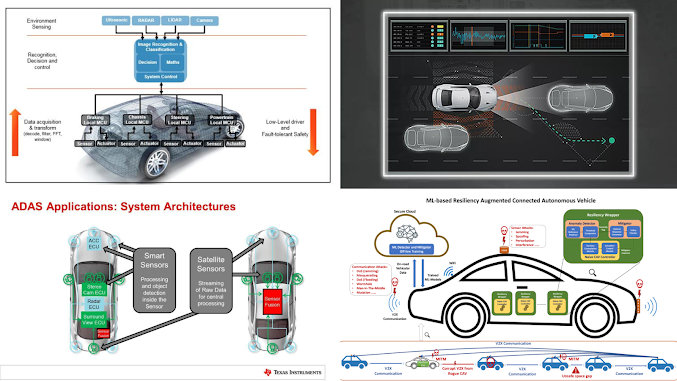Precision in Speed: How ML is Refined in the ADAS Annotation Class

Introduction:
Advanced Driver Assistance Systems (ADAS) have become a game-changer in the automotive industry, ushering in a new era of safety and convenience on the roads. At the core of ADAS technology lies the precision of machine learning models, enabling vehicles to detect, interpret, and respond to their surroundings in real-time. ADAS annotation is a critical process that refines machine learning algorithms, allowing vehicles to make split-second decisions with utmost accuracy. In this blog, we explore the significance of ADAS Annotation and how it elevates the performance of machine learning for safer and smarter driving experiences.
The Role of ADAS Annotation:
ADAS annotation involves the meticulous labelling of data collected from various sensors, including cameras, LiDAR, and radar, to create comprehensive datasets for training machine learning models. These annotated datasets act as the foundation upon which AI algorithms learn to recognize objects, pedestrians, road markings, and other critical elements on the road. The precision and accuracy of ADAS annotation directly influence the effectiveness of ADAS features, such as lane departure warning, adaptive cruise control, and automatic emergency braking.

The Challenge of Precision:
In the context of ADAS Data Collection, precision holds paramount importance. The annotation process requires skilled human annotators who meticulously mark objects and their attributes in vast quantities of recorded sensor data. Achieving high precision in ADAS annotation demands attention to detail, domain expertise, and adherence to strict guidelines.
Key Aspects of ADAS Annotation:
- Object Recognition: Accurate object recognition is fundamental to ADAS functionality. Annotating objects such as cars, pedestrians, cyclists, and traffic signs with precise bounding boxes or semantic segmentation is crucial.
- Semantic Understanding: ADAS systems need to understand road markings, traffic signals, and various environmental elements. Semantic annotation provides contextual information to facilitate this understanding.
- Temporal Annotation: ADAS operates in a dynamic environment, necessitating temporal annotation to track the movement of objects over time, enabling prediction and trajectory analysis.
- Data Diversity: Diverse data is essential to ensure that ADAS models perform robustly under various weather conditions, lighting scenarios, and traffic situations.
.png)
Impact on ADAS Performance:
The quality of ADAS annotation directly impacts the performance and safety of autonomous and semi-autonomous vehicles. High-precision ADAS annotation leads to:
- Enhanced Safety: Accurate object detection and recognition enable ADAS systems to make more reliable decisions, reducing the risk of collisions and accidents.
- Improved Efficiency: With precise annotation, ADAS algorithms can optimise driving strategies, leading to smoother traffic flow and improved fuel efficiency.
- Better User Experience: A well-refined ADAS system ensures a seamless and comfortable driving experience, gaining the trust of users in autonomous functionalities.
- Scalability: Precise ADAS annotation is pivotal in building scalable and adaptable AI models that can handle diverse driving scenarios and expanding road networks.
.gif)
The Evolution of ADAS Annotation:
As technology evolves, so does the process of ADAS annotation. With advancements in AI, machine learning models can play a more active role in the annotation process, automating certain aspects and reducing human effort. This collaboration between human annotators and AI algorithms accelerates the annotation process while maintaining the highest standards of precision.
Conclusion:
ADAS annotation is a cornerstone in shaping the future of transportation. With its focus on precision and accuracy, ADAS annotation empowers machine learning algorithms to operate with unparalleled efficiency and safety. As the automotive industry continues its rapid transformation towards autonomous driving, the refinement of machine learning in the ADAS annotation class will prove instrumental in making roads safer, reducing accidents, and ultimately revolutionising the way we travel. With a commitment to excellence in ADAS annotation, we move closer to a world of smart and sustainable mobility.



Comments
Post a Comment